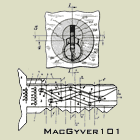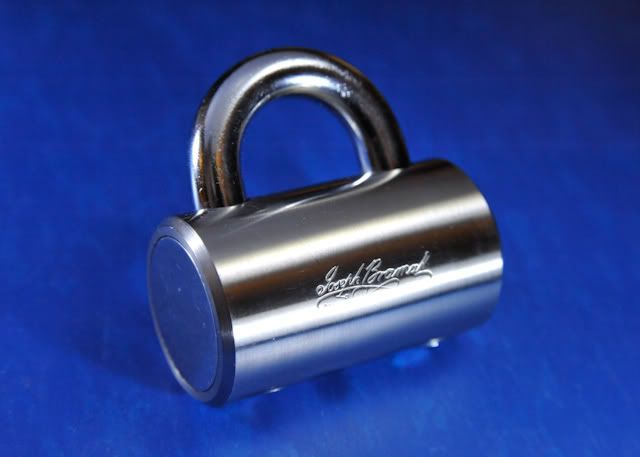
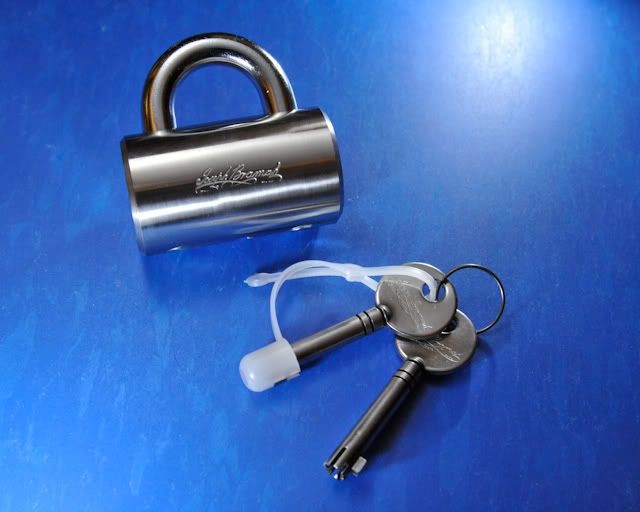
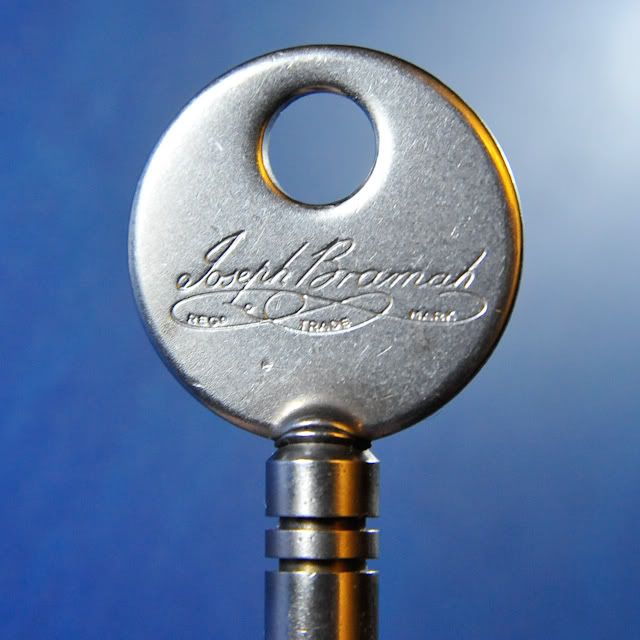
Joseph Bramah published a dissertation on locks in 1785 which includes the earliest diagram that I've found that details an early version of his lock mechanism:
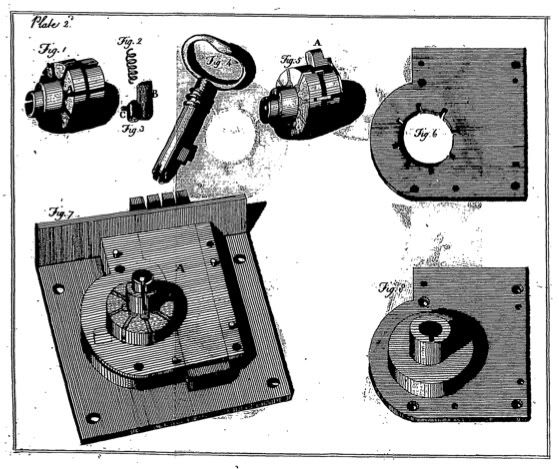
He was so confident in his design that the company placed a large "Challenge" padlock in their window, offering a prize of 200 guineas (a huge amount in those days) to anyone who could pick the lock. The challenge stood unanswered for over 60 years, until Hobbs picked the lock in 1851 -- but it took him 16 days to do it.
On first glance the mechanism looks like a 7-pin tubular lock, but is actually far more secure. The sliders (the "pins") each have a notch on their outside edge; when the sliders are all depressed to the correct depth they allow a sidebar to drop in, which then permits the cylinder to rotate. Like most sidebar mechanisms (Medeco, Primus, etc.) this greatly increases the picking difficulty, as it removes the feedback from individual pins.
The following two photos show a closeup of the keyway and key:
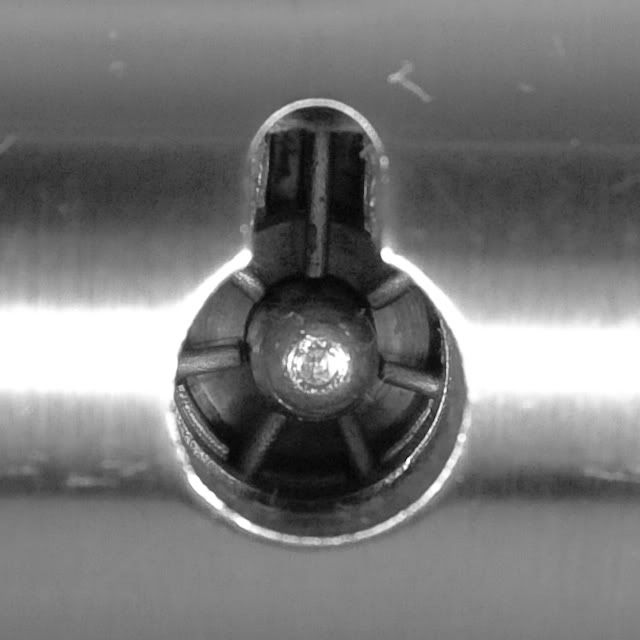
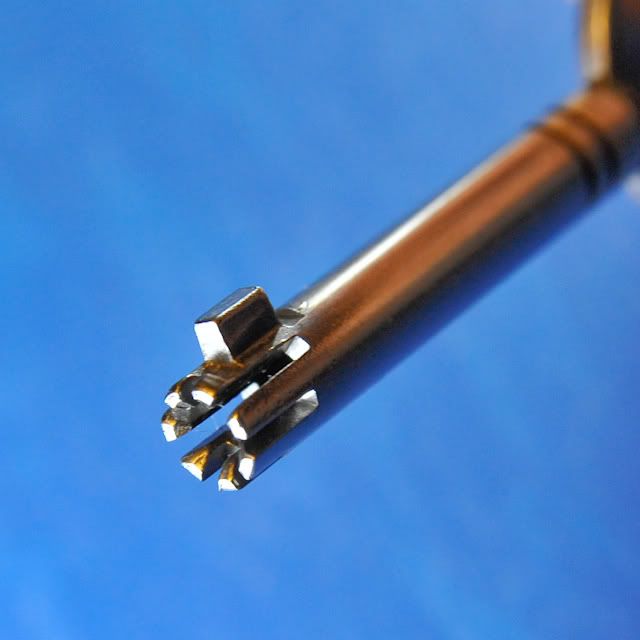
The end of the keys can be prone to collecting pocket lint, which fills up the cuts and prevents them from working properly. This isn't a new problem: even in Charles Dickens' time, people were putting caps on the end of their Bramah keys to help keep them clean:
Charles Dickens wrote:Precious warm walking, isn't it? Said Lowton drawing a Bramah key from his pocket with a small plug therein to keep the dust out!
Today, the factory distributes little plastic caps that you can use to keep them clean -- along with a card that notes that you should clean the slots in the key with a business card if the key stops functioning.
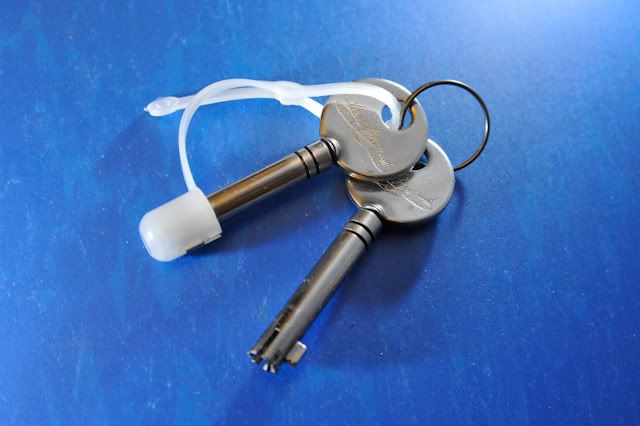
Complete disassembly of the lock involves driving a large pin out of the bottom of the shackle hole (just left of the keyway as it's shown in the photographs) -- which is beyond what I'm willing to do with this particular lock.

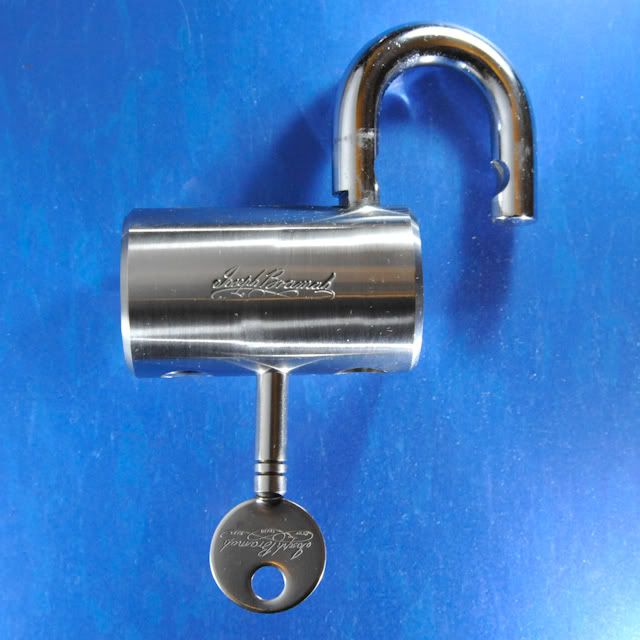
Bramah cylinders are available in practically every format from padlocks to door cylinders to safe locks. Despite the age of the design it's still considered a high-security lock, and has a fascinating history.




